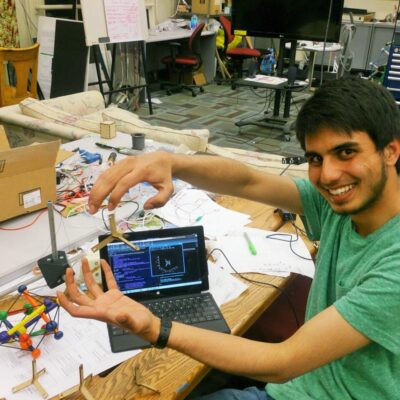Zeerek Ahmad Rose Hills
Non-linear Tensegrity Control System Design for the ULTRA Spine
Current robotic designs have limited movement because they involve rigid bodies and links that are connected through restrictive joints. Conventional actuation of these joints is usually achieved through motor and hydraulic control. In contrast, many macroscopic biological systems have evolved to produce locomotion through the actuation of tensile links to control their rigid counterparts. This allows for lighter and better dynamic systems that are capable of safer and more efficient motion. These biological systems can be modeled with a principle known as tensegrity, a combination of tension and integrity. A tensegrity system refers to an internally stable structure that is built from a network of compressive and tensile members. When applied to robotics, tensegrity structures can achieve large degrees of freedom while remaining extremely lightweight and robust.
During my fellowship, I will be working in Professor Agoginos Berkeley Emergent Space Tensegrities (BEST) Lab in order to research a control system for the Underactuated Lightweight Tensegrity Robotic Assistive Spine (ULTRA Spine) design. The ULTRA Spine is being developed as a base for quadruped robots. The difficulty in this research lies in the nature of a tensegrity. One change in the structure of a tensegrity, such as a tensile member changing length, will alter the equilibrium state of all parts of the network. This summer I will be focusing on controlling this non-linear response in a two link ULTRA Spine for one direction of motion. This will involve completing a computational model of the system, constructing a control system to control the model to specified parameters, and building prototypes to show real life functionality. Heres to a great summer!
Message To Sponsor
My lifelong dream has always been to change the world. Every step I take, every task I complete, every goal I set serves to improve some aspect of our human society. I would like to formally thank the Rose Hills Foundation for providing me with the opportunity to use my progress in engineering in a way that can contribute to the advancement of robotics. In the long term, I hope to continue the tensegrity research I begin this summer to build new robotic systems that can help fix problems like never before.